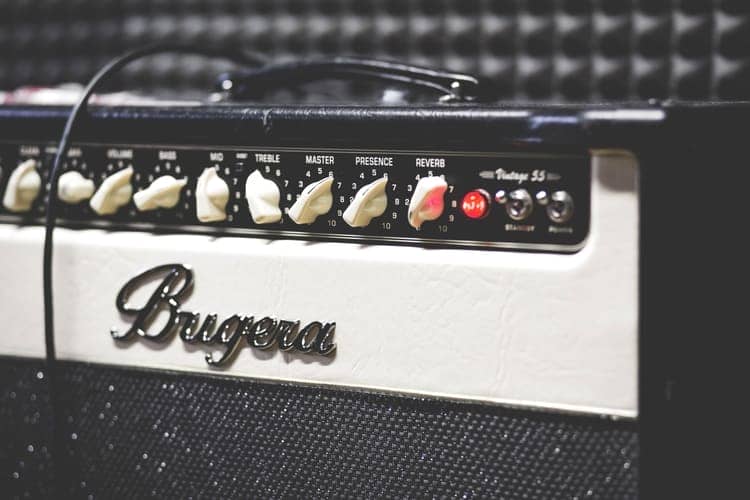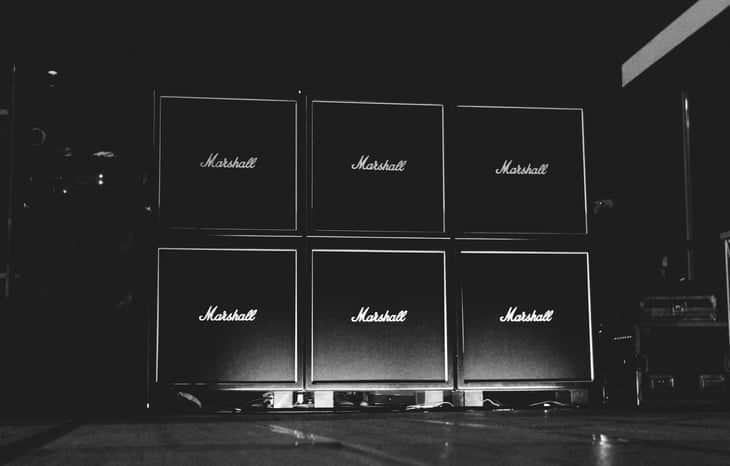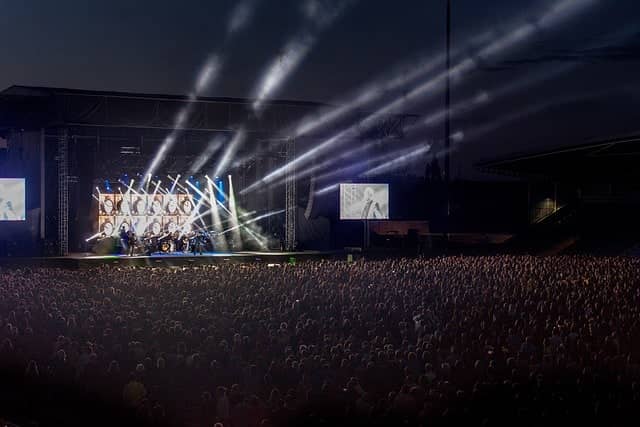
With the vast sea of amplifiers to choose from, knowing your wattage when it comes to your ideal tube amp is a must know for any player.
With my experience of the many tube
This post will discuss the differences between high watt and low watt valve amplifiers assisting your decision when it comes to function and tone.
Separating High and Low Wattage Tube Amps
The obvious difference between a low and high watt tube amp is the ‘bread and butter’ difference in wattage.
A ‘watt’ is simply a measurement of energy. Most players will assume the power and loudness of an amp based on how much wattage it’s packing.
“I need a louder amp so I must go for the higher wattage!” Not so fast there…
In reality, wattage is not exactly the best indicator of loudness and does not paint a full picture when it comes to an amps volume potential.
This is because there’s many
- Circuitry design
- Preamp tubes
- Power tubes,
- Speakers size
- Speaker efficiency
- Guitar’s Pickups (high or low output)
The Wattage Myth
A common misconception I often hear between guitar players is the simple concept that ‘a 40-watt amp is twice as loud as a 20-watt amp.’
It’s understandable why this idea can be misunderstood with players new to guitar amplifiers. But in reality, this is far from the case.
The truth is that both a 20-watt and 40-watt amp will produce similar volumes when maxed out measured on a decibel meter.
I agree the 40-watt amp will have slightly more volume potential than the 20-watt amp but the volume differences are not exactly night and day.
An Example
A 40-watt amp may only produce an additional range of 3-10 decibels of volume than a 20-watt amp when both amps master volumes are maxed out.
How much additional volume depends on many factors already mentioned which are circuitry, preamp tubes, power tubes, speakers, the guitar used etc.
Regardless, that’s not exactly a bucket load of volume and certainly not twice the volume of the lower watt amp. So the notion that a low watt tube amp is twice as loud as a high watt tube amp is completely false.
So what is the main feature that separates a low watt and high wattage valve amplifier?
This Video Explains All (Watch Below)
Remember Wattage = Headroom
Wattage is an indication of an amps available amount of ‘headroom.’ For all of you unsure, ‘headroom’ is a term to describe how quickly an amp will distort and break up for the sound of distortion the more the master volume is increased.
An amp that is 10 watts, for example, will begin to distort much quicker than a 50-watt amp that will need a significantly more volume to push the housed power tubes creating sweet valve distortion and saturation.
To achieve a nice amount of distortion and saturation with a 50-watt amp you will need to reach a very loud volume which is why high watt amps do not make the best bedroom amps.
The notion is that valve amps sound increasingly better the harder you push them to that so-called ‘sweet spot’ of natural warm valve distortion that all players love.
Whereas, (in my opinion) solid state amps sound better when they are tamed at lower volumes and cannot re-create that true tube distortion sound at higher volumes (especially at gigging volumes.
Mainly because most solid state amps include digital elements to their distortion that can sound ‘processed’ and ‘harsh’ on the ears when they are turned up to a high volume for live playing.
(Side note) have you wanted to know what amps sound best at low volumes? I recommend you read this post on solid states sounding better at low volumes when it comes to bedroom amplifiers.
Function of a Low Watt Tube Amp
A 5-watt tube amp will distort at much lower volumes say than a 50-watt tube amp. Hence why tube amps designed strictly for bedroom use are designed to be around the 1-10 watts range.
Low watt amps simply function to achieve break-up and distortion without having to push the amps master volume above a volume that will be annoying the neighbors.
Saying that however, a low wattage amp even on a clean channel will be unlikely to produce a clear, and pristine clean tone at a reasonable level due to its low wattage.
This depends on the amp of course but do not expect a decent loud clean tone with a low watt tube amp.
You may encounter some break-up even on a clean channel. I have noticed that when pushing a clean tones volume with a low watt amp the tone suddenly becomes warm and loses its tightness.
This depends on the amp of course but does not expect a decent loud clean tone with a low watt tube amp.
Function of a High Watt Tube Amp
In comparison, tube amps that are 15 watts and above, will reach a level of saturation and break up at ideal for volumes for gigging and live use.
Hence why the internet minimum for a gigging tube amp these days is viewed at the magical 15 watts. Anything below 10 should function as home and studio amp with some exceptions of amps that are ridiculously loud at 10 watts.
However, let’s take two identical Marshall combo tube amplifiers. One is 20 watts the other is 40 watts? They are both the same design only differing in wattage. What is the difference here when it comes to sound?
The answer is that both amps will have the same tone, the only difference is that the 40-watt Marshall will retain a cleaner tone and signal at higher volumes than the 20-watt Marshall.
Whereas, the 20-watt Marshall will begin to break up and saturate sooner than the 40-watt version of the amp. The 40-watt Marshall will also have more volume potential but not significantly louder than it’s lower wattage twin.
The Right Wattage For You?

Deciding whether you need a high or low tube amp ultimately comes down to your application and requirements from an amp.
Below are 3 types of roles that most guitar players require from their amps…
Bedroom Amplifier (1-10 watts)
So you love the true sound of a cranked warm tube amp and not the biggest fan of solid state distortion?
You want the tube amp sound magic and bedroom volumes for practicing or recording. but have no intention of gigging with this piece of gear.
The best option would be to choose a low wattage amp from 1- 10 watts either a being the maximum for great tube amp tones at bedroom volumes.
Whether it’s a head or combo amp, when it comes to speaker size a 1×12 speaker is the ideal size. As an additional speaker in the form of
Gigging & Rehearsal Amp (15 Watts and above)
So you need more power and volume? A tube amp that is 15 watts above will easily take care of your gigging requirements if the venues have a front of house PA system for
You could possibly struggle for volume without a PA system but should be enough depending on the amp.
However, do you need shimmering clean tones at gigging volume levels without a hint of
If the answer is yes, a high watt amp (20-50 watts) may be a better option for keeping the tone clean. This will also keep the distortion away and to ensure that there is also enough volume if the venue is lacking a front of house system.
Gigging and Bedroom Amp (High Watt with Attenuator Switch)
In my opinion, the greatest inclusion on modern amps these days has to be the internal attenuation technology. These attenuator switches simply reduce the wattage by half from say 40 to 20 watts in a simple flip of the switch.
This removes the need for external attenuation in the form of an attenuator box, some attenuator devices can be hit or miss depending on who you ask.
The switch adds sweet versatility to a tube amp, allowing it to pack enough power for a gig and then allow the user to simply knock off the wattage for practicing at home at a suitable volume.
Portability
The iconic sight of a Marshall full stack lingering in the background on stage during a gig will never get old. As sweet and iconic as this stage backdrop looks, sadly this
The reality is that the current trend of amps is getting smaller in both size and wattage. Why is this?
The answer is that amplifier brands now understand the importance of producing small, portable amps that pack enough power, volume and a worthy tube amp tone for the masses of guitar players.
The frequent average gigging guitarists want a portable amp they can transport to and from gigs without the hassle of lugging big, heavy and back-breaking amps and cabs up flights of stairs.
The other reason is with the advancement of tube technology. Amp brands have worked out how to cram more electronics, components, and technology into smaller compartments.
Having the added benefit of producing affordable amps with less size, volume, and importantly weight. Making them easier to take to and from gigs.
An example of this the explosion of the ‘lunch box’ amplifier a few years ago with the ‘Orange Tiny Terror’ flying the flag for the ‘lunchbox amp.’
This small, punchy but fierce little monster was a major hit with guitar players when it was released into the market. Many amp brands quickly caught on and manufactured their own versions to get a bite of this new lunch box amp trend.
Why High Watt Amps are No longer Popular
To understand why this is happening we will have to go back in time when high watt amps were at their peak.
Back in the day, during the 50s there was no front of house technology like the PA systems we have nowadays.
Guitar players in the 50s and 60s, therefore, placed a demand on amp brands to produce loud amplifiers
Before front of house technology emerged, bands like the Beatles and the Shadows were in a volume war with their own fans.
The huge masses of hysterical female fans in one area combined with constant high pitch screaming. Ironically, meant the fans were louder than the actual band they were seeing.
Hence why the need for loud valve amps was in hot demand to fill large spaces all the way to the heads on the back row.

When rock n roll took off in the 60s to the 80s, the crowds got bigger and outdoor music festivals began to emerge with the attendance of tens of thousands of fans.
Guitar amplifiers again needed to be put through their volume paces without the
The 100-watt full stack Marshall amps we see in old iconic pictures (Jimmy Hendrix at Woodstock festival.) They were hooked up to one another belting out the ear-splitting volume to reach the back of the crowds at musical festivals.
Fast Forward to Modern Times

In today’s modern times,
It’s as simple as placing a microphone to the guitar cab which keeps the on-stage volume to virtually nothing. It also gives the sound engineer a tighter grip on the overall band’s volume.
This technology has become so good that the volumes on stage have practically dropped to next to nothing compared to back in the 50s and 60s.
Go to see any big semi-professional band nowadays and they more than likely will be using in-ear monitors which means the on onstage volume is down to practically nothing.
The Fate of High Watt Tube Amps?
The advancement of
The trend is that amplifiers are not only getting smaller in size but also getting smaller in wattage. There’s simply no need for a loud amplifier to fill a venue because this is achieved by hooking your amp to the venues PA system.
Having a 40-watt amp nowadays is seen as overkill with the usual internet minimum advice for a minimum wattage for gigging is a measly 15 watts.
It seems that amplifier wattage has come full circle over the years with the current trend of amps getting smaller in size and wattage.
Hopefully, my knowledge has given you a better insight to the variance in function when it comes to high watt and low watt tube amplifiers.
